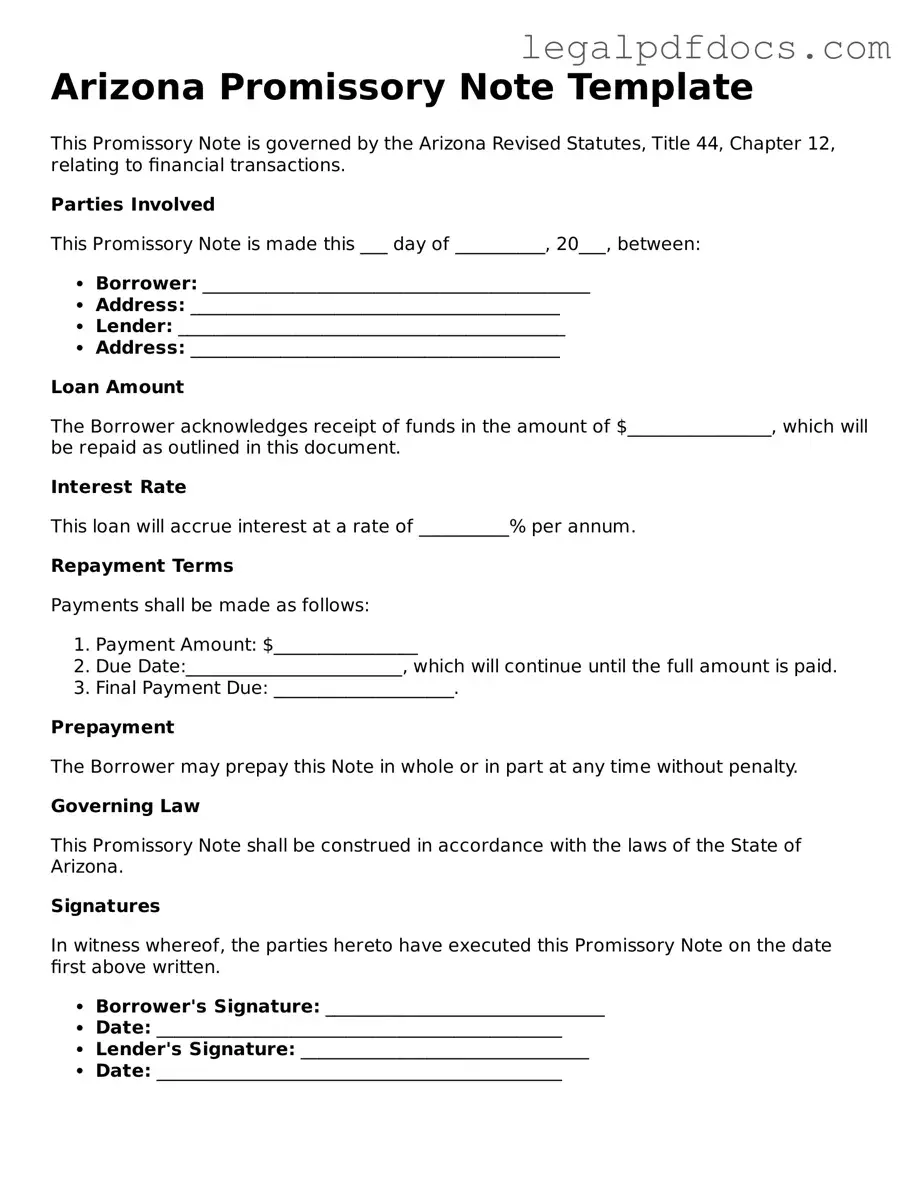Official Promissory Note Form for Arizona
A Promissory Note is a legal document that outlines a borrower's promise to repay a specified amount of money to a lender under agreed-upon terms. In Arizona, this form serves as a crucial tool for individuals and businesses alike, ensuring clarity and security in financial transactions. If you're ready to formalize a loan agreement, fill out the form by clicking the button below.
Open Promissory Note Editor Here
